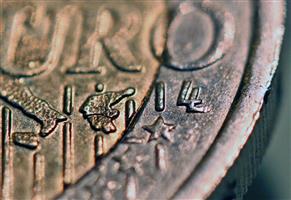Euro Designer Luc Luycx

Luc Luycx (pronounced Lowx) was a 43-year-old computer engineer and coin designer
who lived in Dendermonde, Belgium. Luycx had been working at the Koninklijke Belgische Munt (Royal Belgium
Mint) for 15 years, designing coins on computer. In 1996, Luyncx created a series of coins in
CorelDRAW and sumbitted them to the design competition held by every EU member state, with the exception of
Denmark. He was not alone of course. Professional coin designers, artists and sculptors from all over the
European Union submitted their own designs for the contest which was limited to three themes: architectural,
abstract and European personalities.
A European jury of independent experts chose the nine best series out of a total of 36 in
March 1997. The winning design was the clear favourite of an opinion poll organised by the European Commission
among both the general public and a wide range of currency users' organisations, including consumers and
representatives of the blind and the visually impaired, and also with the European Parliament. In the final
stages 63.8% of a sample of 1900 europeans selected Luycx's series of coins, featuring the map of Europe with
all the countries' borders and a background symbolizing Europe with 12 stars. The final decision on the design
was taken by the European Council meeting in Amsterdam in June 1997. Luycx won the competition for the common
face of the coins and today his designs appear on the back of 50 billion euro coins circulating throughout
Europe. He also received 24,000 ECU for his prize-winning series of design.
Who is who
Luycx's career started out quite differently, as he first worked as a computer
engineer. He had no experience with creating designs on the computer, but loved to paint and draw with a pen.
When his supervisor asked him to take a coin engraving course 10 years ago, he was introduced to CorelDRAW and
his new passion for designing coins began. "When I was designing the coins, I made rough sketches on paper and
scanned them into the computer," said Luycx. "I did the rest of the work, including the design and the editing,
with CorelDRAW".
Designing the euro
Luycx's main concern was making the value of the coin clear at first glance and
even from a distance. So, with clear-cut numbers in his head, he set to work on the design which also
emphasises European integration. Next to the number inscriptions of the one, two and five cent coins, Luycx
placed a tiny globe with the outlines of the European continent. On some Euro coins, the 15 EU countries are
clearly separated, while on others, the individual countries depicted, merge into one continent. "A Europe-wide
currency has to be neutral, the graphics can't be too specific. If I had opted for portraits of famous people
or architectural monuments then one country was bound to be more strongly represented", he says.

Luycx also consciously included England, Denmark and Sweden in his design,
though the three are holding on to their national currencies to start with. And with foresight, he even left
some scope within his design to include prospective EU member states at a later stage. In this way if the need
arises, a new series of euro coins could be rustled up within a few years. Based on plaster models, a precise
matrix was drawn up for each of the new coins to be minted from. This pattern ensures that every single coin
across the continent has an identical front. The coins also have milled edges to make it easier - especially
for those with impaired sight - to recognise different values. Sophisticated bi-metal technology has been
incorporated into the Euro 1 and Euro 2 coins which, together with lettering around the edge of the Euro 2
coin will prevent counterfeiting.
Luc Luycx was pleased. "I think they've really turned out well, great! I wasn't expecting
that. I'm very pleased with them." Naturally, Luycx was looking forward to January 1, 2002, when people Europe
wide would be exchanging the coins - and his designs - as legal tender for the first time.